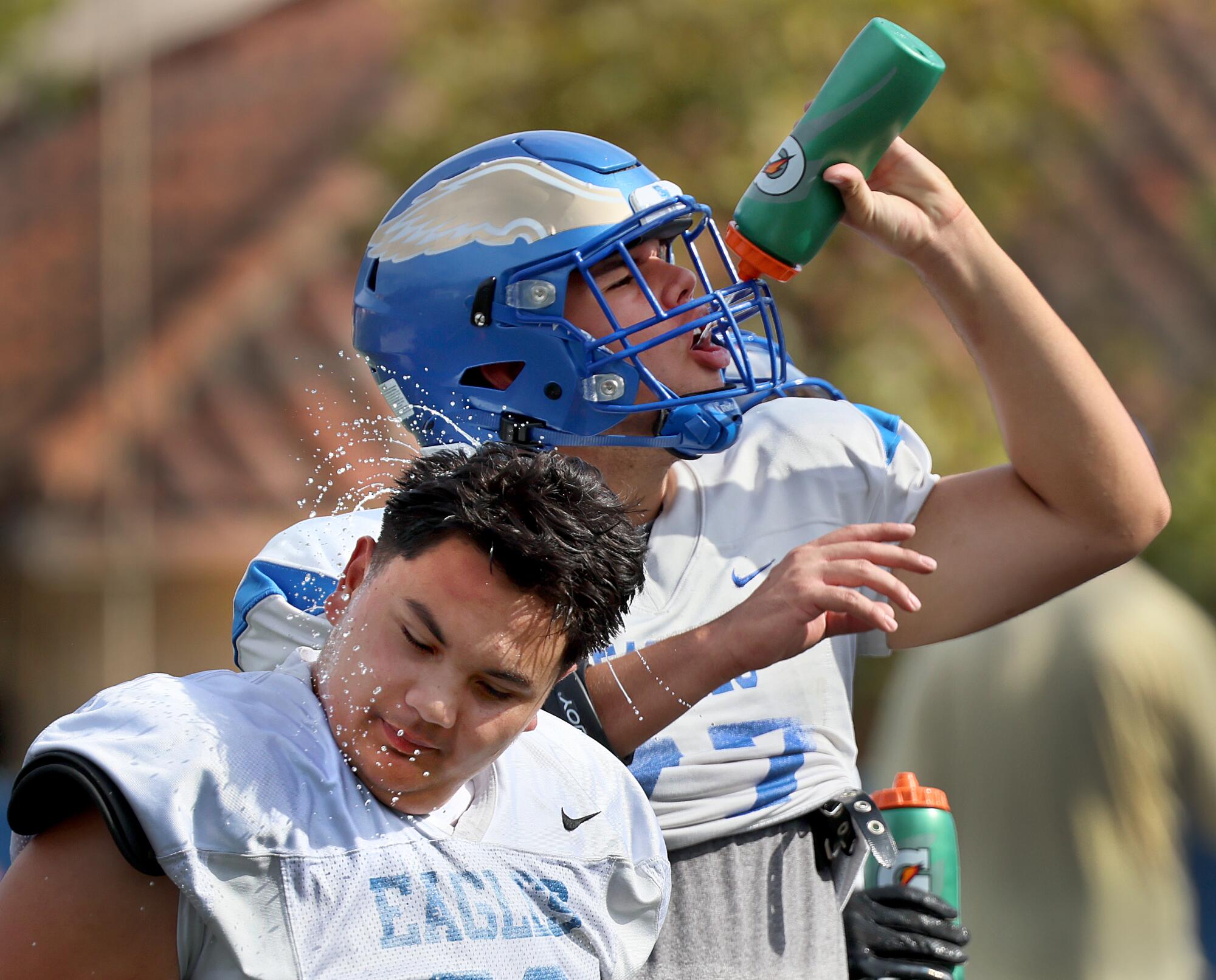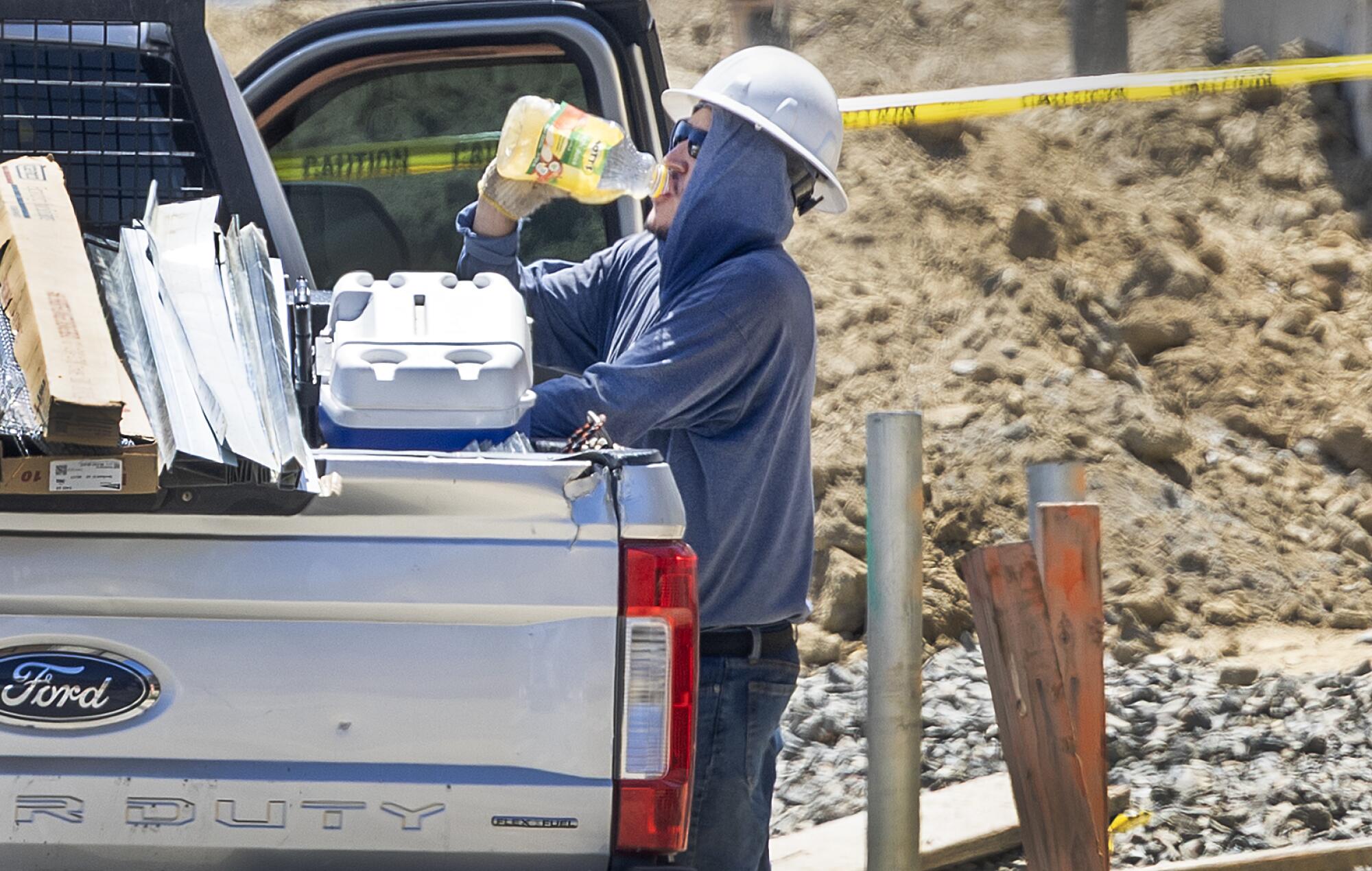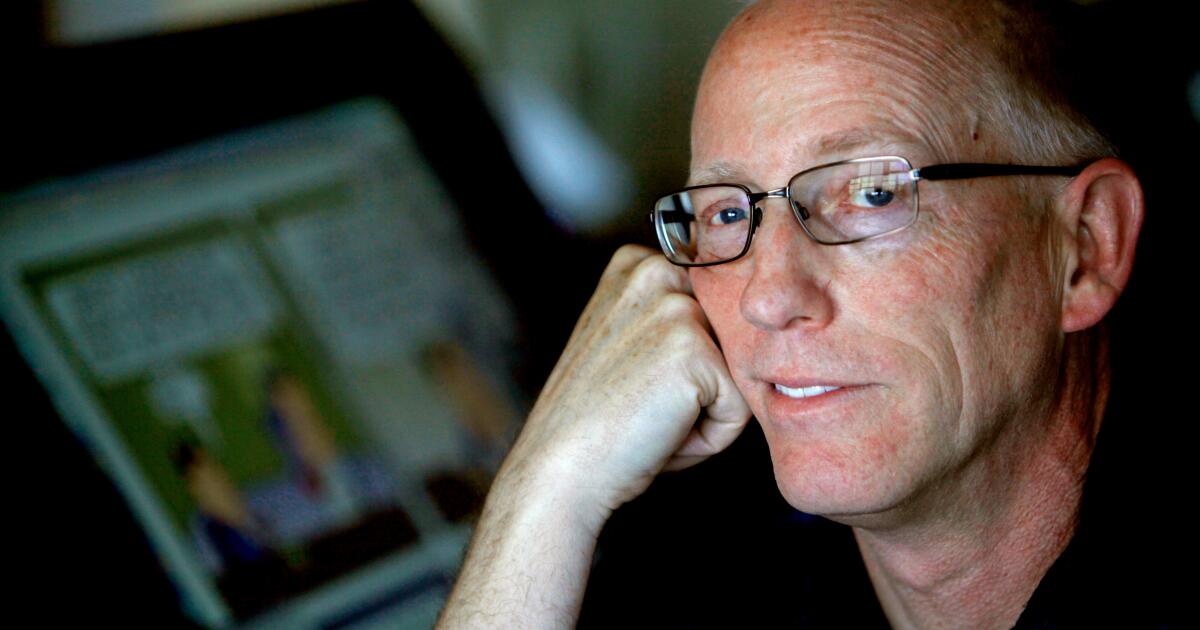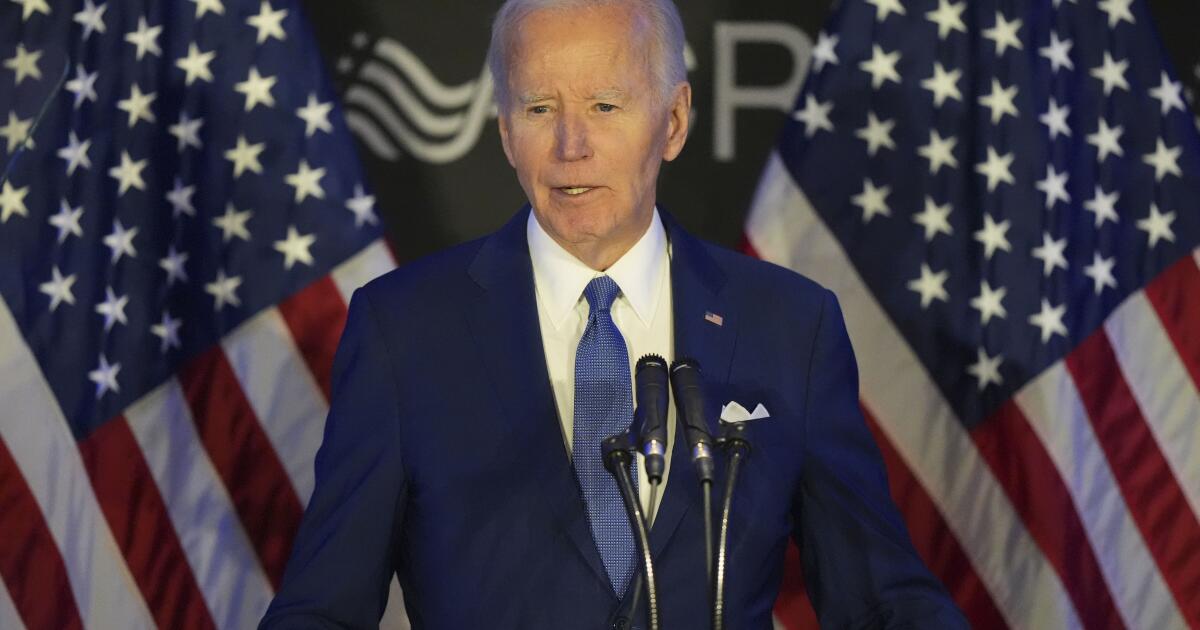Across Southern California, emergency room workers are primed for the wave of patients that pour in as heat waves like the current one drag into their second, third and fourth days. Heat takes an accumulating toll on the body, especially when people cannot cool down at night with air conditioning.
Dr. Jennifer Roh, medical director of the adult emergency medicine department at Harbor-UCLA Medical Center, said preparation means hydration supplies, ice packs and other cooling devices at the ready.
ER doctors, nurses and technicians see the obvious cases of heat illness and heat exhaustion, of course, with fainting and cramps among the symptoms. Heat stroke is the most severe version of heat-related illness and can be life threatening.
But some doctors say their profession is less adept at recognizing that heat may be the reason some patients come in presenting with other illnesses.

Football players take a break from practice to hydrate and cool off amid high temperatures and a heat wave on Wednesday at Santa Margarita High School in Rancho Santa Margarita.
(Allen J. Schaben / Los Angeles Times)
Heat waves are like an “invisible tsunami,” said Dr. Marc Futernick, an emergency physician in Los Angeles. They can exacerbate heart disease, kidney problems and respiratory illnesses.
A patient with diabetes who can’t keep insulin refrigerated during a power outage, for example, could land in the ER in critical condition without anyone making the connection.
When they arrive, they may also be confused because of the compounding effects of heat exposure, leaving physicians to try to piece together what happened. That, says Roh, makes it hard to be certain what role heat has played in an ER patient’s symptoms.
The most vulnerable patients during heat waves are older adults, people with chronic conditions and those taking medications that impair how their bodies self-regulate when it’s hot.
“There’s so much illness beyond heat illness that even doctors who are taking care of those patients aren’t recognizing it,” Futernick said.

A runner passes by the downtown skyline at Echo Park Lake amid a heat wave on Thursday in Los Angeles.
(Carlin Stiehl / Los Angeles Times)
Dr. Sam Torbati, head of the emergency department at Cedars-Sinai Medical Center, said most conditions he sees in the ER during heat waves are largely preventable.
The health issues fall disproportionately on communities with fewer resources.
“Heat in L.A. affects everybody, but it does not affect everybody equally, and some of the people who are the most affected are the most vulnerable people in our community,” said Dr. Alex Gregor, who works at the ERs at Los Angeles General Medical Center and the University of Southern California.
“Skid Row is a heat island, a lot of our patients come from Skid Row or from [other] communities around town where they don’t have access to shade, to cooling, to nature — so there’s an unfair distribution of the burden of illness caused by heat and climate change around our city.”
“It’s a huge health equity and racial justice issue,” he said.
Most doctors don’t typically take climate change into account. Those that do say this needs to change.
Dr. Stefan Wheat, an emergency physician and assistant professor at University of Washington School of Medicine, is one advocate for broader climate-related training that would teach clinicians how heat acts as a “threat multiplier.”
Gregor similarly suggests that emergency medical service providers should be trained to recognize subtle signs of heat illness, and that social workers could be brought in to connect patients to resources such as cooling centers, or to help patients establish a buddy system, as some cities have, so someone notices if they’re in trouble.

A construction worker takes a water break while working on new homes amid a heat wave on Wednesday in Irvine.
(Allen J. Schaben / Los Angeles Times)
The climate-health connection is not new. There are more than a dozen books on the subject, and some medical schools already include climate-health training.
Some hospitals in L.A. and elsewhere now distribute heat-preparedness materials, and outreach efforts to both uninformed doctors and patients have expanded.
But awareness still lags and heat-related mortality is rising, some say. “We’re doing a good job of not making it as bad as it could be,” said Futernick. “But it’s getting worse.”
ER nurses, techs and doctors could take on a more prominent role.
“We can use our voices as healthcare professionals to push for policies that better help protect patients on a larger scale in the community,” said Wheat.
That could mean supporting building codes that ensure adequate cooling, or worker protections for those laboring outdoors in extreme temperatures.
“Heat exhaustion or heat stroke … that’s not capturing the full picture,” Wheat said. “It’s an increasingly pressing challenge.”
In Southern California, it’s expected to remain intensely hot well into September.



